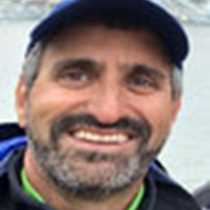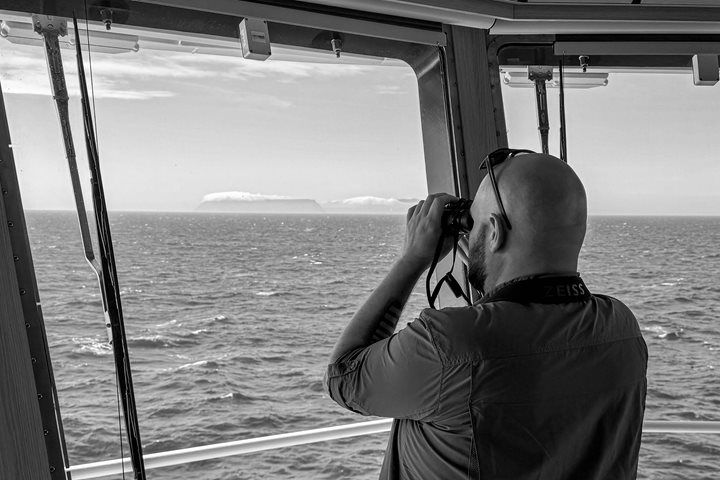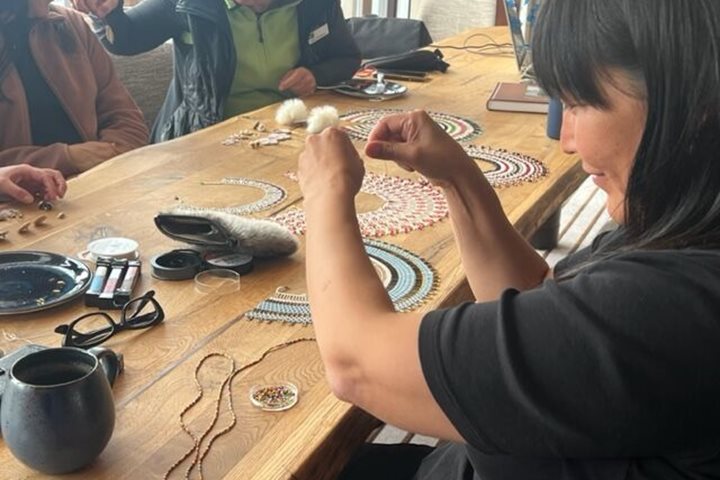John Rae, the 19th-century Scottish explorer who helped discover the fate of the Franklin Expedition, named the low-lying, glacially deposited island we explored today after Jenny Lind, the popular Swedish opera singer of the time. Muskoxen grazed in the distance in front of the large communications infrastructure of an old Cold War DEW Line station. Flightless molting snow geese ushered their recently fledged goslings over barren tundra to mossier gullies for grazing. Here in this harsh environment, microhabitats, such as meltwater-fed ravines that provide protection from the wind, host richer populations of hearty arctic vegetation.
Hikers stretched their legs over the island’s windswept morainal deposits and discovered several clues to life in these high latitudes in addition to the miniature flora underfoot. We viewed a lone male caribou grazing on tundra nutrition. We found a wooly Ross’s tussock moth caterpillar that freezes itself for eleven out of twelve months each year for several years before metamorphosing into a short-lived moth. The jawbones of an arctic fox with perfect dentition were discovered in the moss, and hikers decoded the calligraphy of tracks along a lakefront as evidence of geese, caribou, and polar bears.
As we ventured farther west on our journey through Canada’s archipelagic maze of islands and ice, each little discovery helps us appreciate a swath of the globe few people will ever know.







